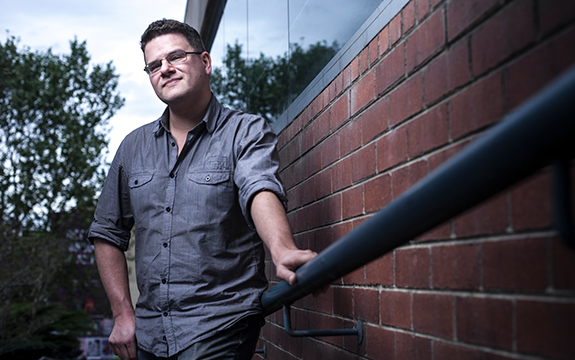Queensland sauropod digs reveal exciting secrets

In Summary
- This article originally featured in Swinburne’s Venture magazine
Things can move slowly in the field of dinosaur discovery, but Swinburne palaeontologist Dr Stephen Poropat has had a busy year.
In June, Dr Poropat joined a team led by Australian Age of Dinosaurs museum founders David and Judy Elliott, in Winton in Queensland. The focus was a site that had been discovered by David and Judy’s son, Bob, in 2015.
The team dug at the site for two weeks and returned for another week in August, unearthing a long-necked sauropod. “We don’t know what species it is yet (maybe Savannasaurus elliottorum or Diamantinasaurus matildae). It is nicknamed ‘Judy’ (after Judy Elliott),” Dr Poropat says.
“Judy is one of the, if not the, most complete sauropod dinosaur skeletons ever found in Australia. The specimen includes teeth, a section of neck almost four metres long, back bones, both shoulders, parts of the pelvis, bones from both front and back legs and — perhaps most exciting of all — possible gut contents.”
The discovery comes after Dr Poropat and fellow researchers published their findings (in July) from a 102-million-year-old Queensland fossil site that was once feared lost.
Austrosaurus mckillopi (believed to have lived five to 10 million years before Judy) was first discovered in the 1930s on a sheep station near Richmond in Queensland.
“In 1933 palaeontologist Heber Longman confirmed it as a long-necked sauropod dinosaur, which was unusual because it was preserved in a marine mudstone, along with (sea creatures including) bivalves and ammonites,” Dr Poropat says.
“But after the discovery and naming of the specimen, the property was sold and the site was effectively lost.” The site had been marked with a sign on two posts but when palaeontologists tried to find it in the 1970s they failed.
“In 2014 Richmond mayor, John Wharton, who grew up on the property and knew the posts set out to find them with Dr Tim Holland, then curator at (another private dinosaur museum) Kronosaurus Korner in Richmond.
“After a fruitless ground search, John jumped in his helicopter, spotted the posts from the air, landed and found bits of dinosaur bone right next to the post. It was absolutely brilliant,” Dr Poropat says.
“The research we’re doing definitely has relevance to research being done by other palaeontologists overseas.”
It potentially reveals how dinosaurs evolved when Australia and South America were both connected to Antarctica “allowing dinosaurs to basically globetrot”.
Dr Poropat’s work on sauropod dinosaurs such as Austrosaurus is ongoing, and he looks forward to revealing more at the Society of Vertebrate Palaeontology 2019 meeting in Brisbane.

